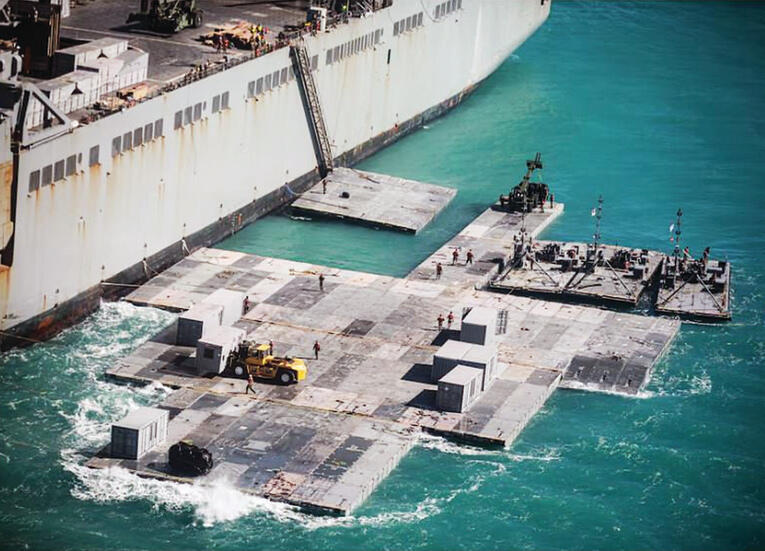Getting your Trinity Audio player ready...
The United States has an interest in building a floating sea pier off the coast of Gaza for four main reasons. First, a sea pier would allow the unloading of large cargoes and quantities of humanitarian aid, which are 10 times or more larger than the quantities currently arriving in Gaza by trucks, most of which are plundered.
Read more:
The second reason is that a pier off the northern shores of Gaza, where Israel has control and there is relatively speaking no dense population that would attack the aid shipments, will ensure that the aid directly reaches the aid organizations operating inside the strip without the mediation of Hamas and crime families.
The third reason is Biden's political conundrum. He has a vested need to placate the Democratic Party base, which has come to include Muslim Americans and various pro-Palestinian activists. Erecting the new pier, Biden hopes, will demonstrate the administration's seriousness when it comes to safeguarding the lives of Palestinian civilians, caught in the middle of the toughest war in the history of the Israel-Hamas conflict.
After all, in several primaries so far, the progressive wing of the party voted "noncommitted" in lieu of voting for the 81-year-old incumbent, making it a protest vote against his supposedly "pro-Israel" stance in Gaza.
The fourth reason lies in the fact that the Biden administration has come to understand the stranglehold right-wing absolutists like Itamar Ben-Gvir and Bezalel Smotrich have over Netanyahu, and this is a way of alleviating some of the criticism about civilian casualties without forcing the Israeli premier to endanger his coalition's structural integrity.
The American naval pier off the coast of Gaza is not the only project trying to bring aid by sea. In the coming days, aid will arrive in Gaza after being loaded onto small vessels in Cyprus, where it will be inspected by Israeli security personnel. In order to bring in large quantities of aid, a floating pier is needed, through which large quantities of supplies can be unloaded and transported to the shore very quickly.
The U.S. Army and Navy have equipment and plans ready to establish what they call a "unified capability to move supplies ashore." This capability, which consists of a floating dock that connects to the shore and supplies ships to which a floating dock is also connected, is intended for use in places where the Marines land and there is no port available to supply the troops.
The last time the U.S. military, in joint cooperation with British armed forces, erected such a floating pier, was during the invasion of Normandy, en route to vanquish the Nazi Wehrmacht. When constructing such a pier, with one end deep in the water while the other is attached to land, one must be mindful of how susceptible it is to damage brought about by extreme weather patterns. Operating such a pier amid a storm can be very challenging, often on the verge of impossible.
Deputy Pentagon press secretary, Sabrina Singh, said the first shipment of US goods for Gaza will commence in 60 days, with the goal being to supply two million food rations a day. She maintained no U.S. forces would set foot inside Gaza as a way to reassure Americans that the United States is not putting troops on the ground in yet another Middle East conflict.
This latest point is of some consequence since the presence of U.S. troops on the ground could put a damper on IDF efforts. This detail was likely negotiated during Benny Gantz's U.S. visit. However, it is possible that, should these efforts prove insufficient, a more robust effort from the Biden administration could in fact see American troops set foot inside Gaza.





